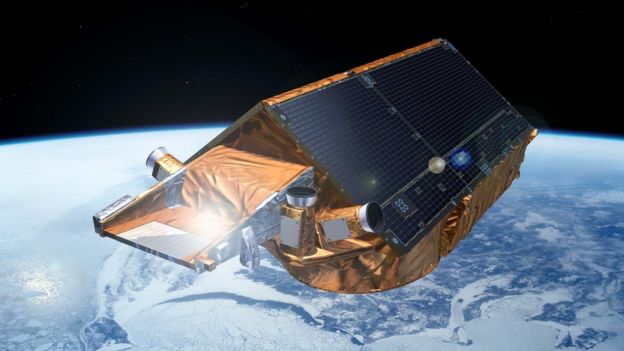COP24 Climate Change
credits : ONU
A cerimónia de abertura oficial aconteceu esta segunda-feira, dia 2 Dezembro, estando presentes delegações de cerca de 200 países.
A Conferência #COP24 está a ter lugar desde hoje, 3 de Dezembro até 14 de Dezembro 2018 em Katowice, Polónia.
Na abertura oficial neste segunda-feira 40 chefes de Estado estão presentes, presididos pelo Secretário-Geral das Nações Unidas, António Guterres.
O objectivo desta cimeira da ONU é enviar uma mensagem inequívoca aos países para reduzirem as emissões de dióxido de carbono e acelerarem a transformação energética de forma a deixarem de usar combustíveis fósseis.
São precisas "acções decisivas" para enfrentar a "ameaça urgente" do aquecimento global.
COP24 Climate Change
credits: picture-alliance/ dpa MAXPPP/ F Dubrai
Esta é a mensagem que abriu os encontros plenários da cimeira do clima COP24, na Polónia.
Neste ano, a principal tarefa da COP 24 será estabelecer a “charter de regras” do Acordo de Paris, ratificado em 2015 e no qual 195 países se comprometeram a limitar o aquecimento da Terra a até 2ºC até o fim do século.
A "charter" deve definir como, especificamente, essa meta deverá ser alcançada. É possível, no entanto, que ela também não seja decidida este ano, assim como não foi no ano passado. A intenção é que o que ficou estabelecido na COP21 Paris 2015 entre em vigor a partir de 2020.
Estudantes juntaram-se ao movimento SchoolStrike4Climate. A iniciativa SchoolStrike4Climate foi inspirada na estudante sueca de 15 anos, Greta Thunberg.
O projecto envolve crianças e jovens dos 5 a 18 anos de cidades e vilas na Austrália. Tentam assim alertar os governantes que levem o futuro do planeta a sério e pedirem aos líderes mundiais que não comprometam o futuro de todos.
A greve, que ocorreu em Sydney na quinta e sexta-feira, dias 29 e 30 Novembro, teve como objectivo de encorajar o governo federal a bloquear a construção da mina de carvão de Adani Carmichael, bem como qualquer novo projecto de carvão ou gás.
credits : SchoolStrike4Climate
Os estudantes também se unem para que a Austrália opere 100% de energia renovável até 2030. Actualmente, a meta é operar com 50% de energia renovável até 2030.
A directora da AKCJA Demokracja, Weronika Paszewska, mostra-se optimista em relação à inversão do aquecimento global.
"Acredito que ainda não é tarde demais, mas em breve pode ser. É muito importante saber o que vai ser feito nos próximos meses e anos. Se for não tarde demais, precisamos agir. Ainda há algum tempo, não muito, mas ainda temos algum tempo".
Sob o olhar atento dos ambientalistas do mundo inteiro, a Conferência do clima da ONU, vai decorrer em Katowice, até 14 de Dezembro 2018.
COP24, the two-week 24th conference of the parties of the United Nations Climate Change Convention (UNFCCC), started on Sunday in Katowice, Poland, with a special focus on carbon neutrality and gender equality.
On Monday, the grand opening ceremony took place this morning, 2 December with about 40 heads of State and heads of Government in attendance, as well as UN Secretary-General, António Guterres.
Thousands of world leaders, experts, activists, creative thinkers, and private sector and local community representatives will gather to work on a collective action plan to realize critical commitments made by all the countries of the world in Paris, three years ago (2015).
UN News put together this guide to COP 24 to answer some of the biggest questions you may have and make sure you’re all caught up, with a ringside seat on the action.
To limit COP24’s footprint and achieve carbon neutrality locally, the conference organisers have taken a series of different measures. First, public transportation in the city is free of charge for the duration of the conference, for all participants.
In addition, reusable materials have been used to set up the conference rooms, including carpets and backdrops. Recycled cardboard furniture was installed in all the main meeting spaces.
Sir David Attenborough speach
credits: @ Copyright REUTERS/Kacper Pempel
Sir David Attenborough delivered a stern speech at the UN's climate change summit in Katowice, Poland, on Monday morning, warning of the impending threats global warming poses to the natural world.
"If we don't take action, the collapse of our civilisations and the extinction of much of the natural world is on the horizon,"
Sir David Attenborough
Let's follow all the events and hope leaders will keep their promesses and will continue to fight for climat.
Geração 'explorer'
02.12.2018



























